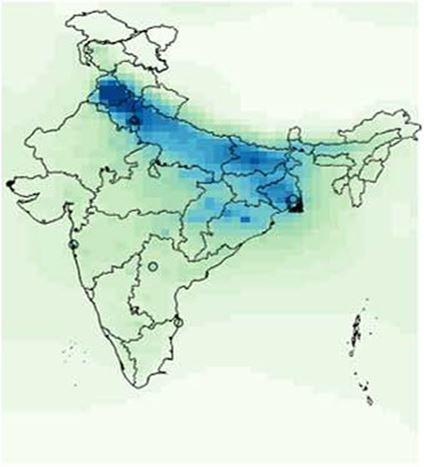
Impact of Circular, Waste-Heat Reuse Pathways on PM2.5-Air Quality, CO2 Emissions, and Human Health in India: Comparison with Material Exchange Potential
Type
India is home to 1.3 billion people who are exposed to some of the highest levels of ambient air pollution in the world. In addition, India is one of the fastest-growing carbon-emitting countries. Here, we assess how two strategies to reuse waste-heat from coal-fired power plants and other large sources would impact PM2.5-air quality, human health, and CO2 emissions in 2015 and a future year, 2050, using varying levels of policy adoption (current regulations, proposed single-sector policies, and ambitious single-sector strategies). We find that power plant and industrial waste-heat reuse as input to district heating systems (DHSs), a novel, multisector strategy to reduce local biomass burning for heating emissions, can offset 71.3–85.2% of residential heating demand in communities near a power plant (9.3–12.4% of the nationwide heating demand) with the highest benefits observed during winter months in areas with collocated industrial activity and higher residential heating demands (e.g., New Delhi). Utilizing waste-heat to generate electricity via organic Rankine cycles (ORCs) can generate an additional 22 (11% of total coal-fired generating capacity), 41 (8%), 32 (13%), and 6 (5%) GW of electricity capacity in the 2015, 2050-current regulations, 2050-single-sector, and 2050-ambitious-single-sector scenarios, respectively. Emission estimates utilizing these strategies were input to the GEOS-Chem model, and population-weighted, simulated PM2.5 showed small improvements in the DHS (0.2–0.4%) and ORC (0.3–3.4%) scenarios, where the minimal DHS PM2.5-benefit is attributed to the small contribution of biomass burning for heating to nationwide PM2.5 emissions (much of the biomass burning activity is for cooking). The PM2.5 reductions lead to ∼130–36,000 mortalities per year avoided among the scenarios, with the largest health benefits observed in the ORC scenarios. Nationwide CO2 emissions reduced <0.04% by DHSs but showed larger reductions using ORCs (1.9–7.4%). Coal fly-ash as material exchange in cement and brick production was assessed, and capacity exists to completely reutilize unused fly-ash toward cement and brick production in each of the scenarios.

